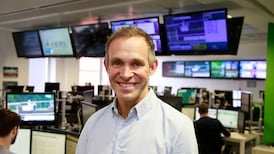SHARES: With returns from indices fluctuating in a narrow range, buying decisions must be on a company-by-company basis
For investors with significant funds committed to equity markets, share price performance so far this year has not lived up to hopes that 2002 would see a strong rebound from two back-to-back years of negative returns. During March and some of April there was a brief bout of optimism, largely built on surprisingly strong first-quarter growth in the US economy.
At one stage, US growth expectations for 2002 became sufficiently strong to lead to expectations of an early rise in US short-term interest rates that created some nervousness in stock markets. This viewpoint quickly dissipated as it became evident that there was a real danger that the rate of growth of the US economy may slow later in the year.
Consequently, many analysts are taking a more cautious view of the prospects for corporate profits growth over the next 12 months.
Most of the world's major stock market indices are still languishing in negative territory. In the US, the S&P 500 is down by 1 per cent so far this year, while the technology-laden Nasdaq is down by more than 14 per cent. In Europe, the FTSE Eurotop 300 is showing a negative year-to-date return of 3 per cent. In Britain, the FTSE 100 has remained trapped in a narrow trading range and is 1 per cent below the level at which it began the year.
In the Republic, the Overall ISEQ index is well down this year, largely due to the collapse in Elan. The financial stocks have been very strong and this is reflected in the strong rise in the ISEQ Financial index of just under 20 per cent over the year-to-date.
The short-term prospects for share prices are likely to remain mixed and the current phase of directionless trading seems set to continue. In this environment the key to achieving reasonable investment returns lies in being successful at picking the right stocks. The accompanying table shows five outperforming shares and five underperforming ones. A striking feature of these figures is the very wide disparity in returns: from the 73 per cent collapse in Elan shares to the 38 per cent rise in the share price of First Active. Not shown in the table is McInerney Holdings, which has risen by 61 per cent.
Not surprisingly, financial stocks are well represented in the outperformers. The two smaller financial institutions - Anglo Irish and First Active - have risen by more than one-third, while Bank of Ireland's share price has enjoyed an uplift of about one-quarter in the year-to-date period.
An investment policy that involved a heavy weighting in the financial sector will have paid handsome dividends in recent months.
However, even within sectors, stock selection is crucial in the current environment. For example, one financial stock that hasn't lived up to expectations is IFG, which has declined by 17 per cent since the start of this year.
Outside of the financial sector, shipping group ICG and the Jurys Doyle Hotel Group have proved their worth. The share prices of these companies were hit hard due to the foot-and-mouth crisis and the aftermath of the September 11th tragedy last year. However, once it became clear that there would be no meltdown in the entire tourist sector of the economy, the market quickly refocused on the strong fundamentals of these two businesses.
There is no definite sectoral pattern to the underperforming shares and the five shares listed are all in different economic sectors. Although Iona Technologies is the only technology stock listed, most high-tech companies have also done badly this year.
For example, Horizon Technology and Baltimore Technologies are down 42 per cent and 50 per cent respectively.
In the luxury goods sector, Waterford Wedgwood has come under pressure as a result of general economic weakness in the US in particular.
Barlo has suffered from a fall-off in demand for radiators in Europe, together with a severe squeeze in margins in its plastics business.
The only consistent message that can be gleaned from this analysis is that investment decisions need to be made on a company-by-company basis. This becomes more crucial when returns from the overall indices fluctuate in a narrow range with no strong trend one way or the other.
Most commentators are expecting only a modest rise in overall equity indices for the rest of the year so successful stock selection will remain key to achieving satisfactory returns.










